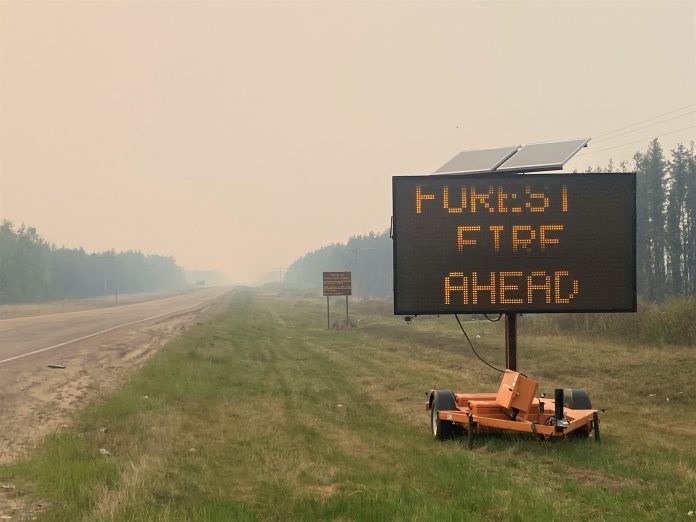
The Prince Albert Grand Council (PAGC) Wildfire Taskforce met recently to begin preparing for the 2024 wildfire season.
Cliff Buettner, director of forestry and protective services for PAGC spoke with the Northern Advocate.
Buettner, has worked with PAGC for the past 25 years and previous to that spent several years “with the government of Saskatchewan as a conservation officer,” giving him 42 years’ experience with wildfires in the province.
The Taskforce was established in 2017 through a resolution forwarded to the FSIN in response to fires in Pelican Narrows in 2017.
In part the resolution calls for increased First Nation response to wildfires “that affect the traditional livelihoods of First Nations and their traditional land,” Buettner said.
First Nation people “want to participate in suppression of fires” that affect their communities,” he said.
Buettner said PAGC is looking at the response to firefighting in the north and want to move to a process used in the past to fight fires where fires were fought early in the morning and in the evening. Camps were set up in the bush and firefighters stayed in the camps which gave them a better opportunity to get to the fire early in the morning to make a good start.
With changes to Occupational Health and Safety, firefighters are housed in town at places such as the Mel Hegland, where firefighters set up camp in the 2023 summer, for example, and then are bussed out to the fight the fire.
“We are missing that opportunity with a remote camp. We want to go back to a more traditional way that we would camp right in the bush and have an early breakfast and be on the line first thing … and then is the most productive time, not get out there at 11 in the afternoon,” Buettner said.
“We have a strategic briefing before we go even near the fire … we check the weather and anticipate the intensity of the fire, what we have, it’s all based on Occupational health. The one priority – protection of human life.”
The Taskforce meeting was held to “look at the risk for this year … [see] what’s going to happen now and in April when the fire start,” he said. Normally the taskforce meets quarterly, but, decided on an early response due to the intensity of the fire season in 2023 and the low moisture levels going into the fall and the upcoming fire season.
They plan to look at moisture replenishment particularly the spring moisture content in the fuel, which is the most critical time, particularly as there is no moisture.
Also, the time between April and the third week of May is the most common time for human caused fires. One of the taskforce’s strategies is to raise awareness about the issue.
Another strategy is to encourage residents to protect their homes, and do some mitigations work.
“We’re looking at a campaign to try to prevent human caused fires,” Buettner said.
“Since 2015, where we’re cutting the bush back away from the community, we have done studies in La Ronge, Sucker River, Stanley Mission and Black Lake [showing] where the crow fire comes towards the community and in the treated area it went back down to the ground.”
Then firefighters can get ahead of the fire’s intensity.
“That’s the whole idea behind mitigation work that we do,” he said.
Work is being done in 10 PAGC communities to educate people on mitigation research in an effort to reduce the threat to those communities.
Beuttner said they also oppose bringing firefighters from other jurisdictions, such as Ontario and countries such as Australia, New Zealand and Mexico.
“We oppose that because a lot of First nation people are trained and qualified … and ready to be a resource to the province for fire suppression.”
They also have technical people, who have the expertise in fire suppression, Buettner said.

